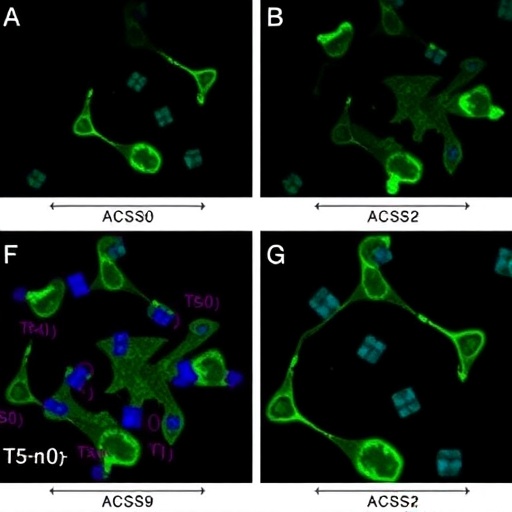PHILADELPHIA – Teens who admit to texting while driving may be convinced to reduce risky cellphone use behind the wheel when presented with financial incentives such as auto-insurance apps that monitor driving behavior, according to a new survey conducted by researchers at the Perelman School of Medicine at the University of Pennsylvania and Children's Hospital of Philadelphia (CHOP). However, while more than 90 percent of teens surveyed said they were willing to give up sending or reading text messages, almost half indicated that they would want to retain some control over phone functions such as music and navigation. Results of the survey are published in the journal Traffic Injury Prevention.
"More than half of teens in the United States admit to texting while driving, and this has become a significant public health issue leading to preventable deaths and disabling injuries," said study lead author Kit Delgado, MD, an assistant professor of Emergency Medicine at Penn. "Our study suggests a promising strategy to curb this epidemic would include enabling a phone setting or third party app with automatic responses to incoming texts, but with navigation and music functions accessible, combined with financial incentives to sustain use."
For example, Delgado suggests this could be accomplished by enabling the 'Do Not Disturb While Driving' setting on an iPhone to automatically turn on while the car is in motion and enrolling in an auto insurance program that offers financial incentives for using apps to track driving behavior, which have begun to emerge in the past year.
Car crashes are the leading cause of death for American teens, and as cellphone use has become ubiquitous over the past two decades, texting while driving has become a significant factor in these accidents. Today, drivers 15- to 19-years-old are more likely than any other age group to die in crashes caused by cellphone-related distractions.
The National Highway Traffic Safety Administration (NHTSA) has recommended a "Driver Mode" on smartphones–similar to the existing "Airplane Mode"–to limit use while driving. Since last year, the operating system for iPhones, iOS, has had a "Do Not Disturb While Driving" mode that locks the phone screen, blocks incoming texts and sends automatic text responses, and limits incoming phone calls. But, the settings are optional. To better understand the barriers to widespread teen adoption of cellphone-limiting strategies, he and his colleagues decided to ask some teens.
"Apps and settings aimed at reducing cellphone distraction while driving can only be effective from a population health standpoint if they are widely adopted," Delgado said.
The researchers contacted the parents of adolescents who had previously been seen across the CHOP Care Network, and invited them to sign up their 16- and 17-year olds for a survey. The investigators ultimately received survey responses from 153 teens who met the study criteria, which included texting while driving in the past month and driving their own car.
The vast majority of the teens indicated that they were "willing" or "somewhat willing" to give up reading emails (99 percent), social media apps (99 percent), sending texts (96 percent), reading texts (91 percent), and making or receiving non-hands-free calls (94 and 91 percent, respectively) while driving. Far fewer of them were willing or somewhat willing to give up music apps (55 percent) or navigation apps (40 percent).
About half of the teens in the sample reported "high frequency" texting while driving – defined as more than six days per month. These teens showed markedly less willingness to give up cellphone uses while driving. For example, 73 percent indicated they were unwilling to give up navigation apps compared with just 44 percent of the overall sample.
The researchers asked the survey participants to consider several possible factors or strategies that could discourage them from texting while driving, such as an annual insurance premium discount, or a cash reward for every week in which they don't text and drive. Most of the teens indicated that financial incentives would be "very effective," but many (54 percent) also indicated that automatic phone locking while driving would work.
All in all, the findings suggest that teens might widely and voluntarily adopt a "Driver Mode" app or phone setting that automatically blocks or limits text and call functions while allowing navigation and music functions, especially if combined with a financial incentive.
"One scalable way to provide a financial incentive would be to offer teens auto insurance discounts, based on actual driving performance and phone use as measured by in-vehicle devices or smartphone apps, which are becoming more common and hold tremendous promise with the shift to usage-based insurance (UBI)," Delgado said. "These programs adjust insurance premiums and provide financial incentives based on directly observed driving behaviors. Our research team is currently conducting studies aimed at figuring out how to design UBI programs to sustainably reduce handheld cellphone use while driving."
It's estimated that there are 16 million UBI subscribers currently in the U.S., which will increase to 60 million by 2023. Furthermore, Delgado says the industry is shifting from in-vehicle devices to smartphone apps that can now directly measure cellphone use while driving.
When asked why they wouldn't want to use cellphone apps that monitor driving behavior, the survey participants cited an aversion to letting parents monitor their behavior – which they believed such apps would facilitate – as their top reason. A modest financial incentive may be enough to outweigh such concerns, Delgado said, though he noted that "we need a better understanding of how to design interventions that optimally balance parental engagement and acceptance by teens."
###
The study was conducted in partnership with the Center for Injury Prevention Research at Children's Hospital of Philadelphia.
The other co-authors of the study were Scott D. Halpern, Alison M. Buttenheim, Claudia Setubal, Yanlan Huang, and Kathryn A. Saulsgiver, all of Penn; Catherine C. McDonald, Flaura K. Winston, of Penn and CHOP; and Yi-Ching Lee of George Mason University.
Support for the research was provided by the National Institutes of Health (UL1TR000003), the National Institute on Aging (P30AG034546), the National Institute of Child Health and Human Development (K23HD090272001), and the National Heart, Lung, and Blood Institute (K12HL109009).
Penn Medicine is one of the world's leading academic medical centers, dedicated to the related missions of medical education, biomedical research, and excellence in patient care. Penn Medicine consists of the Raymond and Ruth Perelman School of Medicine at the University of Pennsylvania (founded in 1765 as the nation's first medical school) and the University of Pennsylvania Health System, which together form a $7.8 billion enterprise.
The Perelman School of Medicine has been ranked among the top medical schools in the United States for more than 20 years, according to U.S. News & World Report's survey of research-oriented medical schools. The School is consistently among the nation's top recipients of funding from the National Institutes of Health, with $405 million awarded in the 2017 fiscal year.
The University of Pennsylvania Health System's patient care facilities include: The Hospital of the University of Pennsylvania and Penn Presbyterian Medical Center — which are recognized as one of the nation's top "Honor Roll" hospitals by U.S. News & World Report — Chester County Hospital; Lancaster General Health; Penn Medicine Princeton Health; Penn Wissahickon Hospice; and Pennsylvania Hospital – the nation's first hospital, founded in 1751. Additional affiliated inpatient care facilities and services throughout the Philadelphia region include Good Shepherd Penn Partners, a partnership between Good Shepherd Rehabilitation Network and Penn Medicine, and Princeton House Behavioral Health, a leading provider of highly skilled and compassionate behavioral healthcare.
Penn Medicine is committed to improving lives and health through a variety of community-based programs and activities. In fiscal year 2017, Penn Medicine provided $500 million to benefit our community.
Media Contact
Katie Delach
[email protected]
215-349-5964
@PennMedNews
http://www.uphs.upenn.edu/news/




